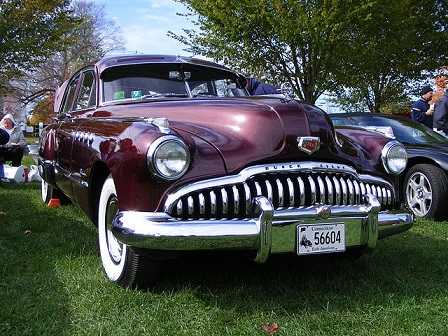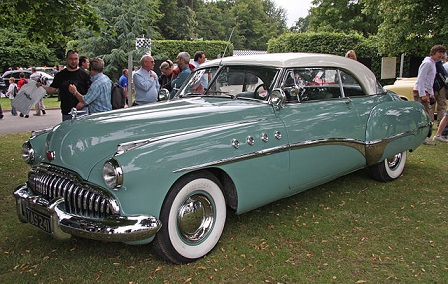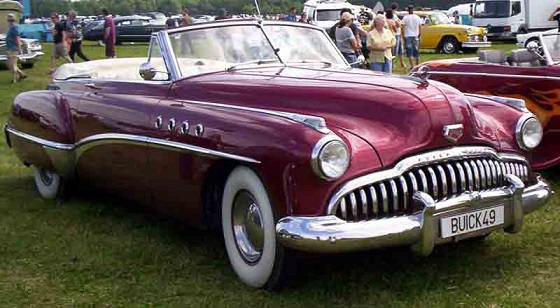Several years ago General Motors aired a series of commercials featuring a ghostly, fedora-wearing figure whom it identifies as Harley Earl, GM's legendary chief stylist. The implication is that the spirit of design which Earl once exemplified has returned to a company whose products have been lacking panache during that…
1949 Buick Roadmaster
This, in our opinion, is one of the prettiest Buicks ever made. Okay, we’ll admit to being biased towards the postwar teardrop shapes that GM did so successfully, but the market was, too, having purchased nearly 400,000 of these Buicks in their first year.
The 1949 Roadmaster was not just another variation on a theme, however. It featured something truly unique in its styling: Four round, chrome-trimmed holes were situated on each front fender, intended to give the impression of a fire-breathing jet engine.

Dubbed Ventiports, they supposedly improved under-hood ventilation but were mostly there for styling purposes. It was Ned Nickles who designed this Buick under the direction of head stylist Harley Earl and it was Nickles who was responsible for the Ventiports, having first fitted them to his personal car. In fact, the ports on Nickle’s car also featured red lenses that flashed on and off at a rate governed by engine speed.
When boss man Earl spotted the ports in the employee parking lot, he insisted they be used in the new Roadmaster, minus the flashing lights. Interestingly, though Ventiports were dropped decades ago, they’ve reappeared on a 2003 Buick.
A second important styling motif that made its appearance in 1949 was the wide, 25-tooth waterfall grille. In later years it was overplayed to the point where critics began referring to it as the “dollar grin,” but initially the grille worked well to identify the marque. You’ll find this same waterfall theme on contemporary Buicks. That gun-sight hood ornament was another long-time Buick trademark.

The elegant interior featured a new instrument panel which, with its round dials, would please the enthusiast driver. Buick described the panel as “pilot centered” because the speedometer could easily be read through the steering wheel.
This was still the era of the straight-eight and the Roadmaster was no exception with its Fireball, 320 cubic-inch engine. As the starter was connected to the accelerator and was engaged by pressing the pedal to the floor, the Fireball always fired up with a roar. V-8 fans may not like admitting this, but straight-eights, with their ideal balance, are smoother-running than Vee-shape engines
Although the Roadmaster came with a standard three-speed manual transmission (shift lever on the steering column… not very sporty but common then), for a few bucks more the buyer could order it with Buick’s Dynaflow automatic transmission.
But the most impressive thing about this car was its distinctive fastback styling. Smooth, aerodynamic, it made most other Detroit products look like lumps of steel by comparison. Few, if any, Buicks made since then have even come close for sheer beauty.






